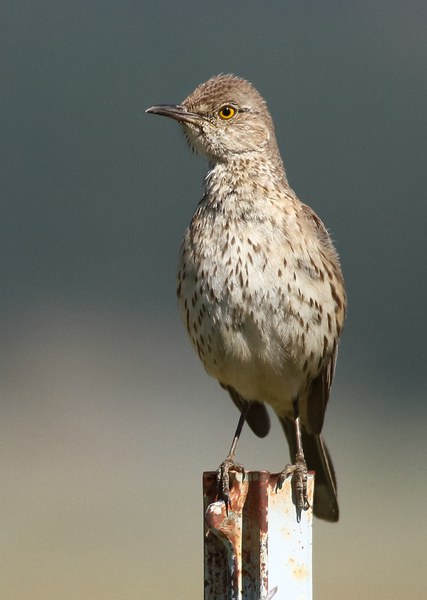The Land Trust recently protected 3,748 acres of Aspen Valley Ranch! Getting to know the lands we protect and the critters that call these lands home is one of the most exciting parts of our work. Here we profile one of those interesting critters: the sage thrasher.
Aspen Valley Ranch is home to an abundance of wildlife! From the largest elk and pronghorn antelope to the smallest painted lady butterfly, the ranch's grassland and juniper hills provide important habitat and migration pathways. One of the birds that piqued our interest at Aspen Valley Ranch has been known to sing for more than 20 minutes without taking a single break!
Life in the high desert can be challenging for sage thrashers, but they have adapted to the wide range of temperature fluctuations and hungry predators by using the sagebrush to their advantage. Sage thrashers will orient their nests eastward to protect their eggs from the heat of the afternoon, and will seek out the largest sagebrush for protection.
Like other thrashers, sage thrashers forage for food on the ground. Running about with their long, strong legs they will plunge their beak into dirt or dead leaves "thrashing" about to find insects or berries to eat.
Sage thrashers rely on healthy sagebrush steppe habitat for their survival. Unfortunately, unplanned growth, unsustainable grazing, and the encroachment of invasive plants is impacting sagebrush steppe habitat throughout the West. By conserving Aspen Valley Ranch, the Land Trust has helped protect some of this important habitat for sage thrashers and other birds like the greater sage-grouse.
Learn More:
- Listen to a Sage Thrasher's song.
- Take a virtual tour of Aspen Valley Ranch
- Discover some of our favorite Central Oregon Birds
- Many birds are labeled 'Indicator Species' but what does that mean?
Sources:
- The Cornell Lab, All About Birds
- Audubon Field Guide, Sage Thrasher
- American Bird Conservancy, Sage Thrasher


